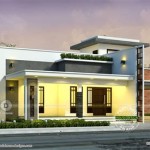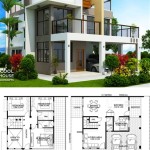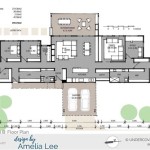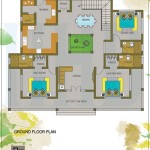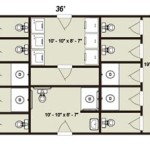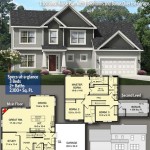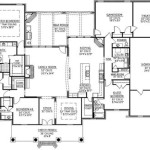Container Homes Floor Plans: Designing Efficient and Stylish Living Spaces
Container homes have gained popularity as a sustainable, affordable, and unique housing option. These homes are constructed using shipping containers, which are repurposed and transformed into habitable spaces. The design and layout of container homes heavily rely on floor plans, which dictate the flow, functionality, and overall aesthetic of the living environment. Carefully considering container home floor plan options is essential to create a comfortable and practical home that meets individual needs and preferences.
Key Considerations for Container Home Floor Plans
Developing an effective container home floor plan involves a thoughtful process of assessing various factors. These factors influence the overall design and layout of the home, ensuring it meets the unique requirements of the occupants. Here are some key considerations:
1. Space Allocation:
Container homes typically utilize a limited amount of space, making efficient space allocation crucial. The floor plan needs to accommodate essential living areas like bedrooms, bathrooms, kitchens, and living rooms. Determining the size and function of each space is crucial, ensuring that all areas have sufficient room for furniture, appliances, and everyday activities.
2. Container Configuration:
Container homes can be constructed using various configurations. Single containers can serve as studio apartments, while multiple containers can be joined together to create larger homes. The number and arrangement of containers significantly influence the floor plan layout and impact the overall design flow. This process requires careful planning to ensure the containers seamlessly connect and create a cohesive living space.
3. Interior Design and Aesthetics:
Despite their unconventional construction, container homes can be designed with modern and stylish interiors. The floor plan should consider the placement of windows and doors, creating natural light and ventilation. Additionally, the positioning of walls and partitions within the container can enhance privacy and create distinct areas for different purposes. Factors like natural light, ventilation, and the strategic use of color and textures significantly impact the overall ambiance and aesthetic appeal of the container home.
Popular Container Home Floor Plan Layouts
Several popular container home floor plan layouts cater to various needs and preferences. These layouts provide a foundation for different styles and designs, offering a range of choices for potential homeowners. Here are some of the most common container home floor plan layouts:
1. Open Floor Plan:
This layout maximizes the feeling of space by minimizing internal walls and partitions. The kitchen, living room, and dining area are interconnected, creating a large open area. This layout is ideal for social gatherings and families who prefer a more spacious and communal living experience.
2. Linear Layout:
This layout aligns containers in a straight line, creating separate rooms arranged in a sequence. Bedrooms typically occupy the ends of the line, with shared spaces like the living room and kitchen positioned in the middle. It is a practical layout for smaller homes, offering a clear separation between living areas and maximizing space.
3. L-Shaped Layout:
This layout utilizes two containers placed perpendicularly to each other, creating an L-shape. This arrangement offers a more flexible space layout, with the possibility of including a courtyard or outdoor area in the corner. It's a versatile layout suitable for both small studios and larger multi-room homes.
Important Tips for Designing Container Home Floor Plans
Designing an effective container home floor plan requires careful planning and meticulous attention to detail. Here are some important tips to consider during the design process:
1. Maximize Natural Light:
Strategic placement of windows is critical in container homes, particularly as containers are often limited in natural light sources. Design the floor plan to maximize natural light penetration, allowing for brighter and more comfortable living spaces.
2. Utilize Vertical Space:
Take advantage of the vertical space within containers to create storage solutions and maximize efficiency. Floor plans can incorporate built-in shelves, loft beds, or other vertical storage systems to optimize limited space.
3. Consider Insulation and Ventilation:
The floor plan should incorporate insulation and ventilation features. This will create a comfortable living environment, especially in extreme temperatures. The layout should consider the placement of insulation panels and ventilation systems, ensuring proper air circulation and temperature regulation.
Container home floor plans offer a unique and versatile opportunity to create sustainable and stylish living spaces. Careful planning and consideration of the key aspects discussed above will ensure that your container home design meets your specific requirements and preferences, resulting in a comfortable and functional home that embraces a modern and eco-conscious lifestyle.

Container Home Floor Plans Types Examples Considerations Cedreo

Container Home Plans Blueprints Housing

Container Home House Plans Cargo Best Ing 4 Bedroom 3x40 Foot Containers

Container House Plans Making A Home In Living Designs

Container Home Floor Plans Structures Layouts More Ideas

Container Home Plans Designs On Instagram Check Out The Multiple In 2024 House

Floor Plans Container Homes Pop Up S

Ultra Modern Home Plan Reimagining Containers 81716ab Architectural Designs House Plans

Container Home Floor Plans Structures Layouts More Ideas

2024 Container Homes House Plans Book Designs Best Buy

